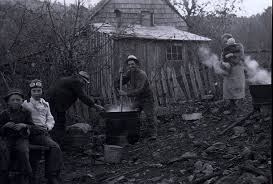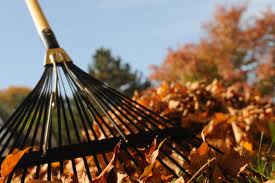by Maxine Williams Bahr | Aug 24, 2019 | Blog
Football season is now in full swing, this is the perfect opportunity to discuss what is the most important part of any weekend in the fall. No, it is not who you are playing in Fantasy Football or which of the teams is projected to win the title. It is the food of course! Everyone can agree that the food served during the game is some of the best you can ever have. Follow these links:
 Pepperoni Pizza Dip from CHOW: Spicy, cheesy and served with garlic bread sticks. Enough said!
Pepperoni Pizza Dip from CHOW: Spicy, cheesy and served with garlic bread sticks. Enough said!
Fried Chicken Bites from My Recipes: These are a great option since everyone loves chicken wings and are undeniably a game day staple, but let’s be honest, they are a complete mess to eat and are hard to handle while screaming at the refs.
Hot and Cheesy Caramelized Corn Dip from How Sweet Eats: Even during game days, everyone needs their vegetables. This solves the problem; cover them in cheese and serving them with chips.
Fried Pickles with Spicy Ranch Dip from Buns in My Oven: Fried pickles are traditionally a southern thing, but these are so wonderful even a Yankee would like them!
by Maxine Williams Bahr | May 26, 2019 | Blog, Uncategorized
The Good Housekeeping definition pretty much tells us – it’s the fat from pigs, cooked and used as shortening in several kinds of foods.
foods.
Few people use lard anymore, and the very mention often evokes unfavorable reactions – a shrug, a wan smile, or a wrinkled nose. Most cooks long ago replaced lard with more convenient substitutes or more healthy alternatives such as vegetable or olive oils. Today, this solid form of animal fat is saddled with a bad rap. Nutrition conscious eaters shun it for its devastating effects on our arteries; and though you can still buy preservative rich lard at the grocery, you’ll be hard pressed to find anyone who still supplies the fresh unprocessed version. Lard has become a four letter word. But for old time Smoky Mountain residents, lard was the grease that kept the wheels of life smoothly turning.
The manufacturing of real lard necessarily starts with butchering hogs. This was a time honored activity in the mountains, because nearly every farm had a few hogs. Pork, after all,, was the meat of choice of nearly every mountaineer. They left their pigs wander the woods most of the year, fattening up on chestnuts and acorns. After the first freeze in fall, usually sometime in November, they chose on or two the animals to butcher.
Usually on butchering day or the day after, the lard was rendered or melted. They cut it into small pieces about the size of a hen’s egg or smaller. These chunks were put into a big iron pot or wash kettle with just enough water to keep from sticking together, then simmered over a low fire. For those who might want a more accurate measure, one book says optimum temperature for thorough rendering should not exceed 255 degrees.
Lard had a few other hand uses around a farm other than cooking. Soap making was an important one. Wood ashes, preferably from hickory, were gathered in the hopper, and water was dripped through the ashes to produce lye. That was mixed with cold water and lard and cooked into a worthy “lye” soap. Lard had a few medicinal purposes too. Mixed with turpentine, it was rubbed on the chest to treat pneumonia.
Foods fall in and out of favor. Perhaps we moderns will someday again sing the praises of lard fresh from the pig. Maybe, just maybe…or maybe not!
by Maxine Williams Bahr | May 5, 2019 | Blog
 Why buy a mountain home with a view? The answers are endless but here are a few thoughts…Incredible sunrises and sunsets highlighting the horizon with the most brilliant colors imaginable, fog mystically moving through the trees and lifting from the valley below, light green springtime oaks transforming into fall’s golden rays of sunlight streaking the Snowbird Mountains with incredible veins of gold, mother nature’s dramatic passing storms, glowing moonlight illuminating the forest, magnificent snow-capped peaks, panoramic mountaintop views spanning 360 degrees, shooting stars, lots of sunshine and crystal clear blue skies.
Why buy a mountain home with a view? The answers are endless but here are a few thoughts…Incredible sunrises and sunsets highlighting the horizon with the most brilliant colors imaginable, fog mystically moving through the trees and lifting from the valley below, light green springtime oaks transforming into fall’s golden rays of sunlight streaking the Snowbird Mountains with incredible veins of gold, mother nature’s dramatic passing storms, glowing moonlight illuminating the forest, magnificent snow-capped peaks, panoramic mountaintop views spanning 360 degrees, shooting stars, lots of sunshine and crystal clear blue skies.
by Maxine Williams Bahr | Mar 28, 2019 | Blog, Uncategorized
 The temperature is slowly dropping and so goes the traffic of buyers or at least that is the belief of many real estate agents. Buyer traffic does drop off in the cooler months however; it has not been proven that the actual transaction volume drops by similar numbers. This is a matter of perception. We at Southland Realty believe that qualified motivated buyers remain in the market year round. From a buyer’s point of view, time and individual circumstances dictate when the home shopping process commences. From our point of view it is easier for the listing agent and the seller to sell in the offseason since there are fewer tire kickers, or nosey neighbors in the market. We would always prefer to deal with a handful of quality buyers than a glut of buyers that are a mixed bag of motivation and indecision.
The temperature is slowly dropping and so goes the traffic of buyers or at least that is the belief of many real estate agents. Buyer traffic does drop off in the cooler months however; it has not been proven that the actual transaction volume drops by similar numbers. This is a matter of perception. We at Southland Realty believe that qualified motivated buyers remain in the market year round. From a buyer’s point of view, time and individual circumstances dictate when the home shopping process commences. From our point of view it is easier for the listing agent and the seller to sell in the offseason since there are fewer tire kickers, or nosey neighbors in the market. We would always prefer to deal with a handful of quality buyers than a glut of buyers that are a mixed bag of motivation and indecision.
by Maxine Williams Bahr | Nov 2, 2018 | Blog
Some species that have disappeared from our area over the past two centuries are finding their way back again, that to restoration efforts of park rangers and wildlife lovers. While the reintroduction of elk has claimed most of the attention here’s a look at others that have made a final stand in the forest.
River Otters – Since the arrival of European settlers in the area, the river otter were sought by trappers for the fur trade. The animals that were once common all over were eventually trapped and hunted to extinction in the area. Reintroduction efforts began in 1986 with more than 100 otters released over a decade.
Peregrine Falcons – Peregrine falcons, known for their lightening speeds of up to 200 miles per hour and deadly talons, disappeared from these mountains and nearly from the face of North America – do the exposure to the harmful pesticide DDT before it was banned. As part of a captive breeding and recovery program, more than 6,000 were released nationwide, including many in the Great Smoky Mountain National Park during the 80’s and 90’s.
Red Wolves – Only one of the reintroduction programs has failed, that of the endangered Red Wolf. Red Wolves were close to extinction in the late 1970s with none left in the wild and only 30 in a captive breeding program. Several pairs were released in the Smokies in the early 1990s. Pup survival rate was poor, however and adults had trouble finding enough to eat given competition from coyotes. After eight years, the park decided it could not support a wolf population and removed the few that were left.

 Pepperoni Pizza Dip from CHOW: Spicy, cheesy and served with garlic bread sticks. Enough said!
Pepperoni Pizza Dip from CHOW: Spicy, cheesy and served with garlic bread sticks. Enough said!



